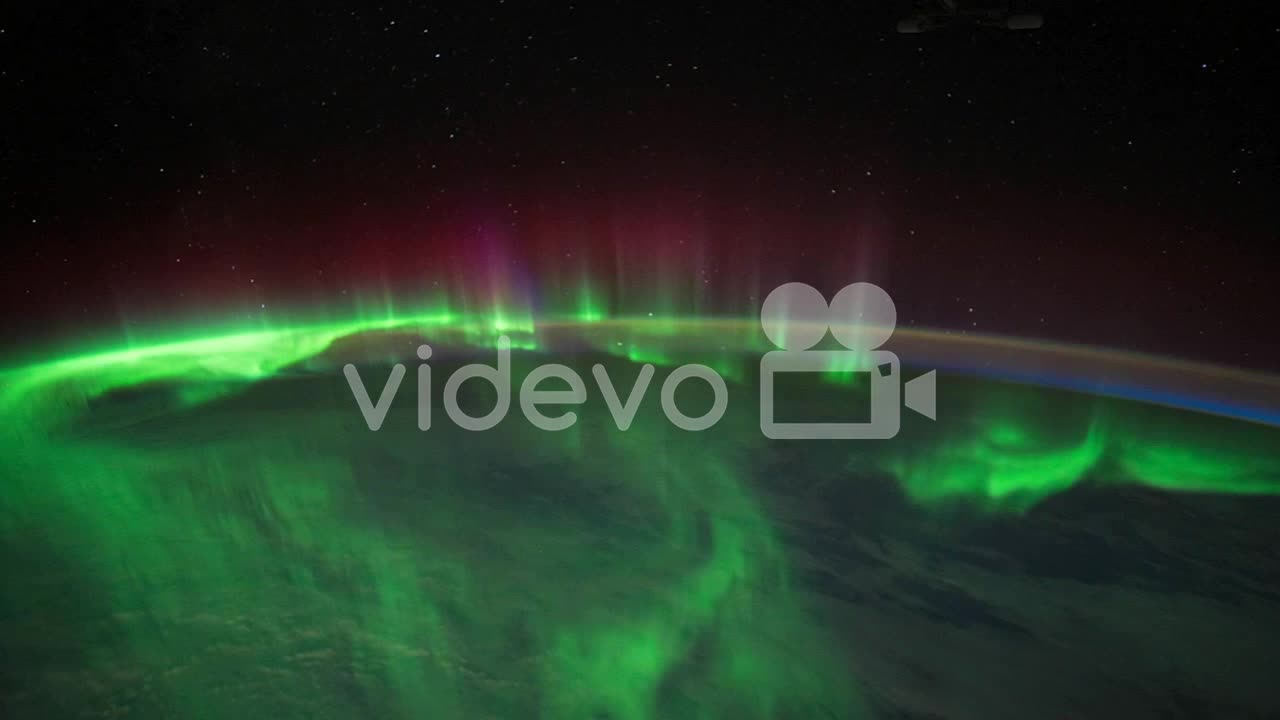Premium Only Content

The International Space Station Flies Over The Earth With Aurora Borealis Visible 1
The International Space Station (ISS) is a marvel of modern engineering and international cooperation, orbiting our planet at an altitude of approximately 420 kilometers (260 miles). As it zips through the inky blackness of space at a speed of about 28,000 kilometers per hour (17,500 miles per hour), it offers a breathtaking perspective of Earth from above. One of the most enchanting sights that astronauts aboard the ISS have the privilege to witness is the ethereal dance of the Aurora Borealis, also known as the Northern Lights.
The Aurora Borealis is a celestial phenomenon that occurs when charged particles from the sun collide with gases in the Earth's atmosphere, creating a spectacular display of colorful lights. These mesmerizing lights can be seen near the Earth's polar regions, making the ISS an ideal vantage point for this celestial show. When the station passes over regions where the Aurora is active, astronauts aboard the ISS are treated to a captivating light show that seems to envelop our planet. The curtains of green, pink, and purple hues gracefully undulate across the night sky, casting an otherworldly glow on the Earth's surface below.
For those aboard the ISS, witnessing the Aurora Borealis from space is not only a visual spectacle but also a profound reminder of the beauty and fragility of our planet. It serves as a stark contrast to the harsh, barren landscape of space and underscores the importance of preserving our precious home in the cosmos. As the ISS continues its orbital journey, astronauts aboard are granted not only a scientific perspective but also a deeply spiritual one, reminding us all of the wondrous tapestry of the universe in which our planet plays a remarkable role.
-
 UPCOMING
UPCOMING
SavageJayGatsby
2 hours agoSpicy Saturday | Let's Play: Baldur's Gate 3 | $300 Spicy Bite Goal | Mallymouse and Gwenifred
9 -
 LIVE
LIVE
Rallied
3 hours ago $1.16 earnedSolo Challenges ALL DAY
250 watching -
 2:26:32
2:26:32
BooniesHQ
2 hours agoGame Of SKATE Shaun Hover Vs. Jeff DeChesare: Boonies Skate Night 1
53K1 -
 17:08
17:08
Exploring With Nug
22 hours ago $0.53 earnedMassive Thunderstorm Hits During Search for Missing Georgia Woman!
2.35K -
 LIVE
LIVE
Sgt Wilky Plays
45 minutes agoRumble Gaming Bad Company Presents WARZONEPALOOZA
78 watching -
![Devin Nunes - Devin Nunes Reveals The Document The [DS] Was Looking For Was Hidden,Truth Is Coming](https://1a-1791.com/video/fww1/20/s8/1/-/e/L/d/-eLdz.0kob-small-Devin-Nunes-Devin-Nunes-Rev.jpg) 1:17:44
1:17:44
X22 Report
7 hours agoDevin Nunes - Devin Nunes Reveals The Document The [DS] Was Looking For Was Hidden,Truth Is Coming
99K83 -
 LIVE
LIVE
GritsGG
7 hours agoRumble Customs! 3515 Ws! 🫡!
175 watching -
 LIVE
LIVE
BigTallRedneck
3 hours agoREDD CONQUERS WARZONEPALOOZA
18 watching -
![[LIVE] WARZONEPALOOZA | Team: Helljumpers | #RumbleGaming #RumbleTakeover](https://1a-1791.com/video/fww1/a8/s8/1/G/N/O/d/GNOdz.0kob-small-LIVE-WARZONEPALOOZA-Team-He.jpg) LIVE
LIVE
Joke65
2 hours ago[LIVE] WARZONEPALOOZA | Team: Helljumpers | #RumbleGaming #RumbleTakeover
10 watching -
 LIVE
LIVE
Illyes Jr Gaming
6 hours agoIt's WARZONEPALOOZA!
29 watching